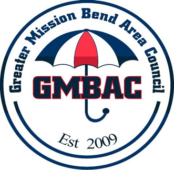Deputy Sam Cerda, with the Harris County Sheriff’s Office, was invited by Michella Cade, Crime Watch Coordinator for Mission Bend Home Owners Association, to give a high level presentation on gang awareness. The Crime Watch meeting was held on July 17th, 2012 in the MB HOA club house. The Presentation included gang identification, why youth join gangs, activity, graffiti, and reporting gang activity and resources at our disposal to become more knowledgeable of gangs in our community.
Gangs are a community problem requiring a collaborative approach of intervention, prevention and suppression. As with all crime related issues in a community, residents should be aware of and report crime and suspicious activity to law enforcement officials. Community involvement is as important as policing in the effort to prevent, control and stop crime.
Gang Identification: common tattoos of gangs usually involve numbers and letters; i.e. M (13th letter in the alphabet = 13; PTB; Houstones (The Texans’s Football star symbol); Tangos; Dango Blast; OMG (does not stand for oh, my God), but rather are motorcycle gangs. Another motorcycle gang is the Banditos. Gangs are involved in all major crimes. Many use area codes such as 713, 281, 832, etc. to identify the general location of the gang.
Gangs can also be identified by a group of people meeting / hanging out regularly at the same location, same time, wearing like/same colors, sporting same tattoos, etc. Report this behavior immediately to Harris County Sheriff Office.
Why Join:The reason so many join a gang is because they want to be wanted, to belong, to gain peer respect, relief from peer pressure, or from just plain boredom. Warning signs that your youth is in a gang are poor grades at school; the use of a nickname; sporting gang-related tattoos; having large amounts of money; and of course, gang clothing (although some just like wearing gang-looking clothing).
Gang Graffiti vs Tagging Graffiti: Not all graffiti is gang graffiti
|
Gang Graffiti:
|
Tagger Graffiti:
|
Texas Law
Texas Penal Code §28.08 makes it a crime to intentionally or knowingly make markings with aerosol paint, indelible marker or an etching or engraving device on tangible property without consent of the owner. Markings can include inscriptions, slogans, drawings or paintings. Penalties are assessed based on the amount of loss suffered by the property owner and may range from fines up to $2,000 and/or confinement for up to 180 days, up to fines of $10,000 and/or confinement for 5 to 99 years.
Report and remove graffiti immediately. Contact the Graffiti Abatement program or the Harris County Sheriff Office or submit an anonymous tip . The Graffiti Abatement program will remove graffiti free of charge. Also, notify your HOA.
Gang Resources:
- Mayor’s Anti-gang Unit
- Stop Houston Gangs
- Know Gangs
- National Gang Center
- Gangs or Us
- Houston Crime Reports
- Spot Crime
Things We Can Do to Address Gang Activity
- § Educate yourself on gangs. Know the warning signs and indicators.
- § Abate graffiti on your property as soon as possible. Report graffiti that is on public property to the city or the county.
- § Report crime or suspicious activity to law enforcement. Be as specific as possible with the information you provide.
- § Be active in your community and attend meetings to get updates on crime in and around your neighborhood.
- § Get to know your neighbors. Participate in neighborhood watch groups, phone or email trees to alert neighbors about recent incidents.
- § Utilize our community newsletter or website to post reports on activity.
Submit Anonymous Tips… but don’t be afraid to act. Understanding gang behavior and acknowledging that they may exist in our families, our schools and our neighborhoods are the first steps to addressing the problem.


